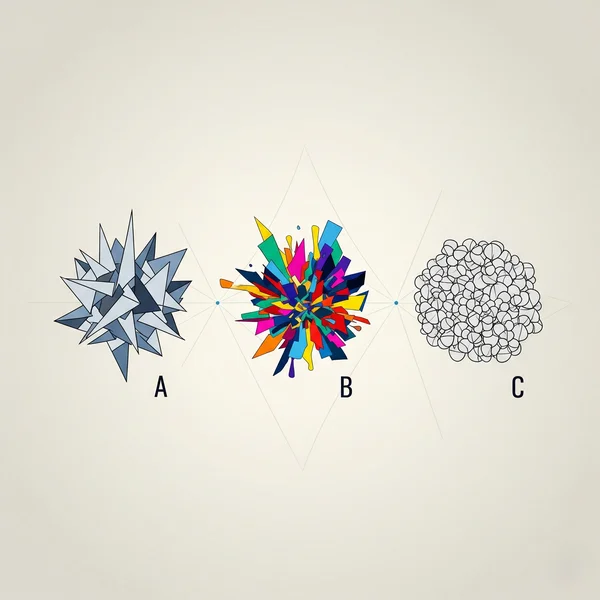10 Types of Personality Disorders: A Complete Guide
Have you ever wondered what are the different types of personality disorders and what makes them distinct from one another? Understanding these complex conditions is the first step toward greater self-awareness and empathy. This guide provides a clear, comprehensive overview of the 10 primary personality disorders as recognized by authoritative sources like the DSM-5. If any of these descriptions resonate with you, you can explore our free, confidential self-assessments for preliminary insights.
What Are Personality Disorders? A Foundational Overview
So, what exactly defines a personality disorder? It's not just about having a quirky personality or experiencing a bad mood. A personality disorder is an enduring and inflexible pattern of inner experience and behavior that deviates markedly from the expectations of the individual's culture. This pattern is pervasive, starting in adolescence or early adulthood, and leads to significant distress or impairment in social, occupational, or other important areas of functioning. It’s crucial to distinguish between personality traits, which everyone has, and a personality disorder, which is a clinical condition.
The 3 Clusters of Personality Disorders (DSM-5 Classification)
To make the personality disorder list easier to understand, the Diagnostic and Statistical Manual of Mental Disorders, Fifth Edition (DSM-5), groups the 10 types into three clusters based on descriptive similarities. This classification helps clinicians and researchers organize them, and it can help you see the connections between them.
- Cluster A: Characterized by odd or eccentric behavior.
- Cluster B: Characterized by dramatic, emotional, or erratic behavior.
- Cluster C: Characterized by anxious or fearful behavior.

Cluster A: The "Odd, Eccentric" Personality Disorder List
Individuals with these disorders often appear unusual or peculiar to others. Their difficulties lie in social awkwardness and social withdrawal.
Paranoid Personality Disorder (PPD): Pervasive Distrust
People with PPD are characterized by a pervasive distrust and suspicion of others. They often assume that people are trying to demean, harm, or threaten them, even without any evidence. This can make forming close relationships extremely difficult.
Schizoid Personality Disorder (SzPD): Social Detachment
This disorder is marked by a persistent pattern of detachment from social relationships and a restricted range of emotional expression. Individuals with SzPD often prefer solitary activities and seem to lack a desire for intimacy or connection, appearing indifferent to praise or criticism.
Schizotypal Personality Disorder (STPD): Eccentric Ideas & Discomfort
Individuals with STPD exhibit a pattern of acute discomfort in close relationships, along with cognitive or perceptual distortions and eccentricities of behavior. They may have odd beliefs or magical thinking and often have difficulty with social cues. If you're curious about where you might fall on this spectrum, a well-designed personality disorder test can be a starting point.

Cluster B: The "Dramatic, Emotional, Erratic" Types
This cluster includes some of the most well-known personality disorders. The common feature is a pattern of violating social norms, acting impulsively, and displaying excessive or unstable emotions.
Antisocial Personality Disorder (ASPD): Disregard for Others
ASPD is characterized by a pervasive pattern of disregard for and violation of the rights of others. This may include deceitfulness, impulsivity, irritability, and a lack of remorse. It is a condition that requires careful and professional assessment.
Borderline Personality Disorder (BPD): Instability in Relationships
BPD is marked by a pattern of instability in interpersonal relationships, self-image, and emotions, alongside significant impulsivity. Individuals may experience intense fears of abandonment, chronic feelings of emptiness, and inappropriate anger.
Histrionic Personality Disorder (HPD): Excessive Emotionality
Those with HPD display a pattern of excessive emotionality and attention-seeking. They often feel uncomfortable when they are not the center of attention and may use their physical appearance to draw attention to themselves. Their emotions can appear shallow and shift rapidly.
Narcissistic Personality Disorder (NPD): Need for Admiration
NPD is characterized by a pervasive pattern of grandiosity, a need for admiration, and a lack of empathy. Individuals with NPD may have an exaggerated sense of self-importance and be preoccupied with fantasies of unlimited success or power.
Cluster C: The "Anxious, Fearful" Personality Disorders
The common thread in this cluster is a high level of anxiety, such as fear of social rejection, a need to be cared for, or an obsession with control.
Avoidant Personality Disorder (AVPD): Social Inhibition
AVPD is characterized by a pervasive pattern of social inhibition, feelings of inadequacy, and hypersensitivity to negative evaluation. Individuals with AVPD are intensely afraid of rejection and criticism, leading them to avoid social or work activities that involve interpersonal contact.
Dependent Personality Disorder (DPD): Pervasive Need to Be Cared For
This disorder is marked by a pervasive and excessive need to be taken care of, which leads to submissive and clinging behavior and fears of separation. People with DPD often have difficulty making everyday decisions without an excessive amount of advice and reassurance from others.
Obsessive-Compulsive Personality Disorder (OCPD): Preoccupation with Orderliness
OCPD is characterized by a preoccupation with orderliness, perfectionism, and mental and interpersonal control, at the expense of flexibility, openness, and efficiency. It's important to note this is different from Obsessive-Compulsive Disorder (OCD), which is an anxiety disorder. Many wonder, "what personality disorder do I have test results might suggest?" For those concerned with these specific traits, our tools can offer a preliminary look. Take a free personality disorder test to explore further.

Beyond the List: Understanding Is the First Step
This guide provides a basic map to the complex world of personality disorders. It's important to remember that real people are far more complex than these descriptions. These categories are tools for understanding, not boxes to put people in. True diagnosis can only be made by a qualified mental health professional after a thorough evaluation.
Frequently Asked Questions About Personality Disorders
What is the difference between a personality trait and a personality disorder?
A personality trait is a consistent characteristic, like being shy or outgoing. A personality disorder involves a long-term, rigid, and unhealthy pattern of thinking, feeling, and behaving that causes significant problems in your life and deviates from cultural expectations.
How are personality disorders officially diagnosed by a professional?
A diagnosis is made by a psychiatrist, psychologist, or clinical social worker through a comprehensive clinical interview. They will discuss your symptoms, personal history, and experiences. They may also use standardized assessment tools and will compare your symptoms to the criteria outlined in the DSM-5 for personality disorders.
Do I have a personality disorder if I see myself in one of these descriptions?
Not necessarily. Many people may identify with some traits from these descriptions. A disorder is diagnosed only when these patterns are inflexible, long-standing, and cause significant functional impairment or distress. For a helpful, non-diagnostic first step, you can use our online screening tools.
This article is for informational purposes only and does not constitute medical advice. If you are concerned about your mental health, please consult a qualified professional.